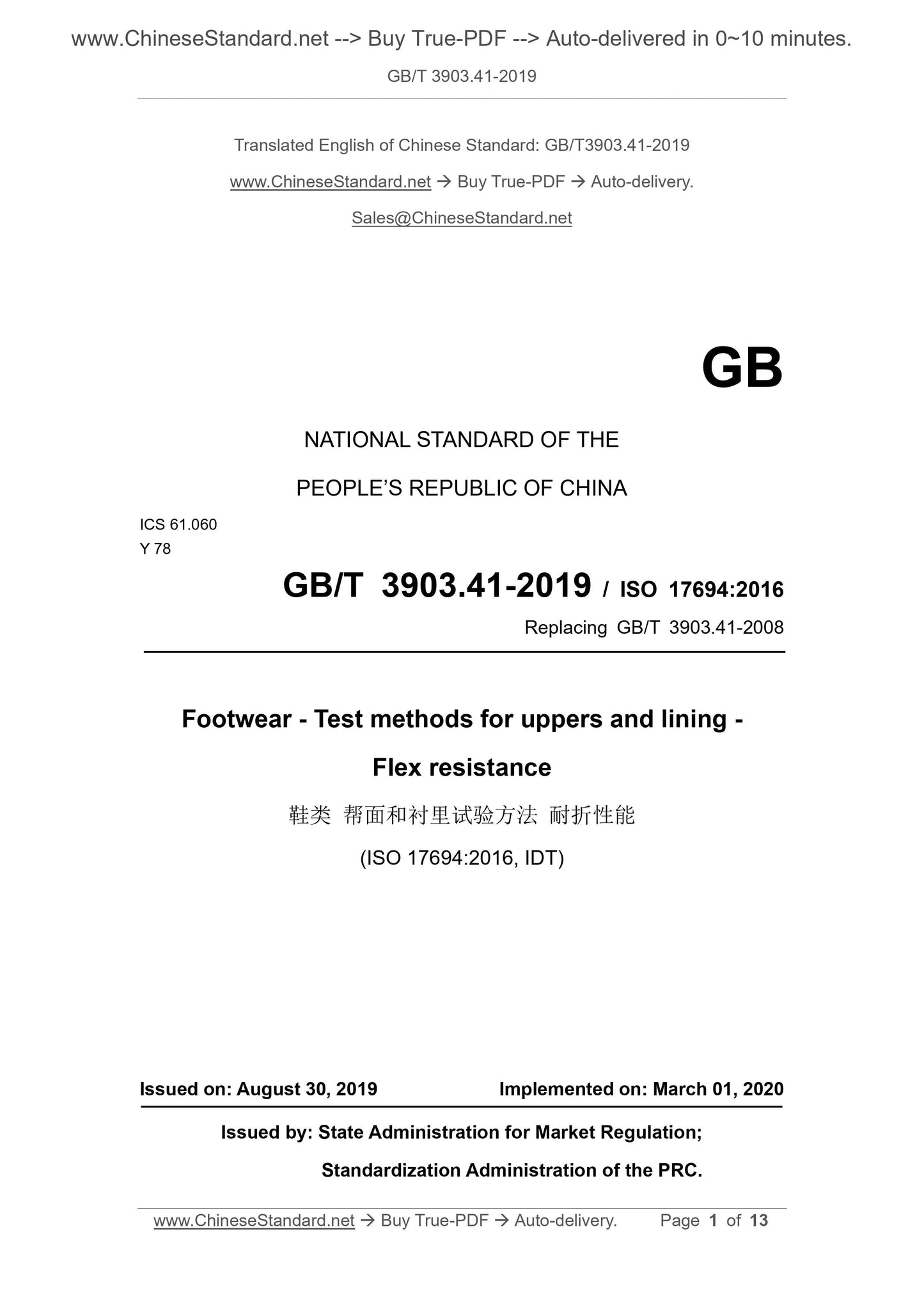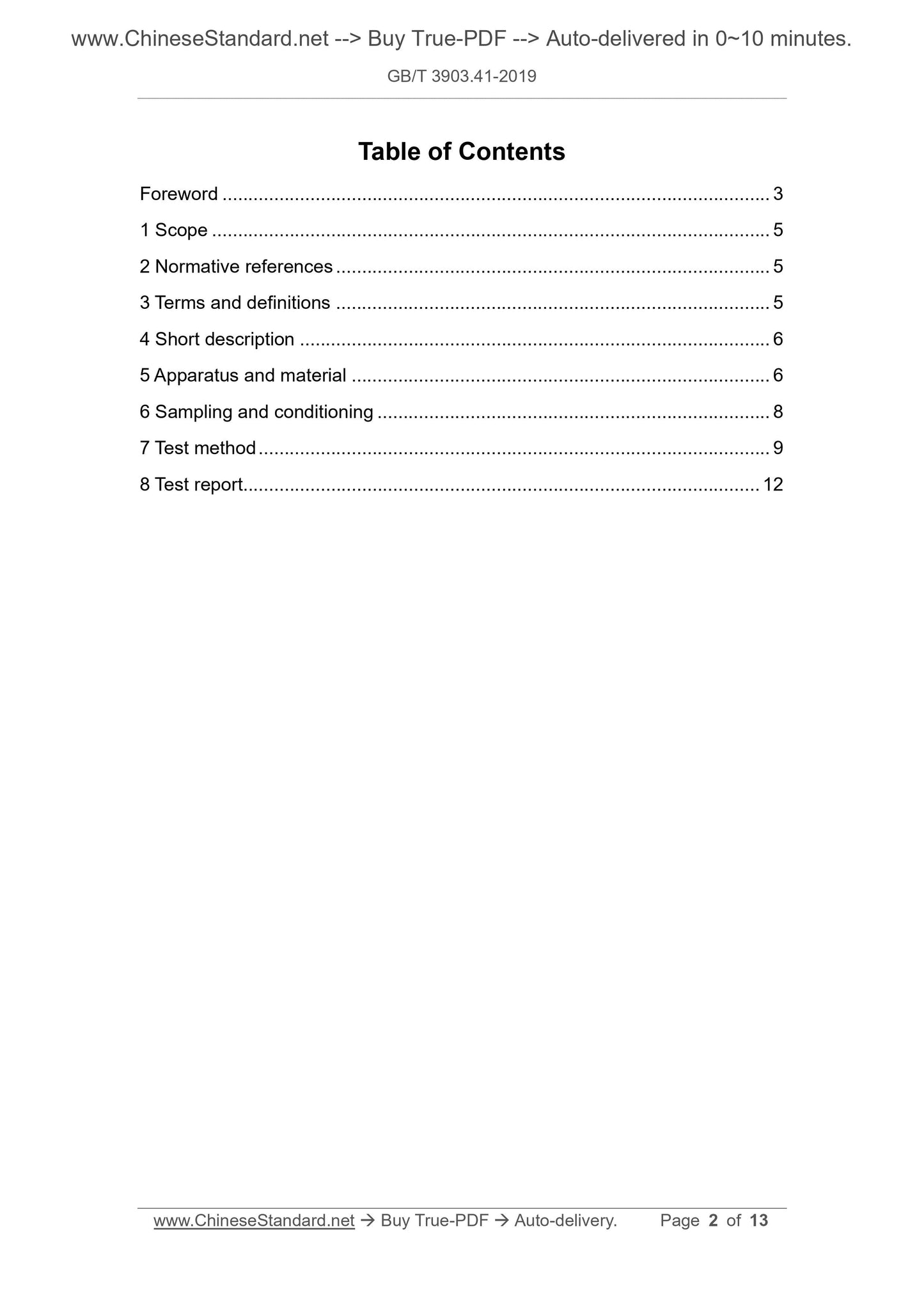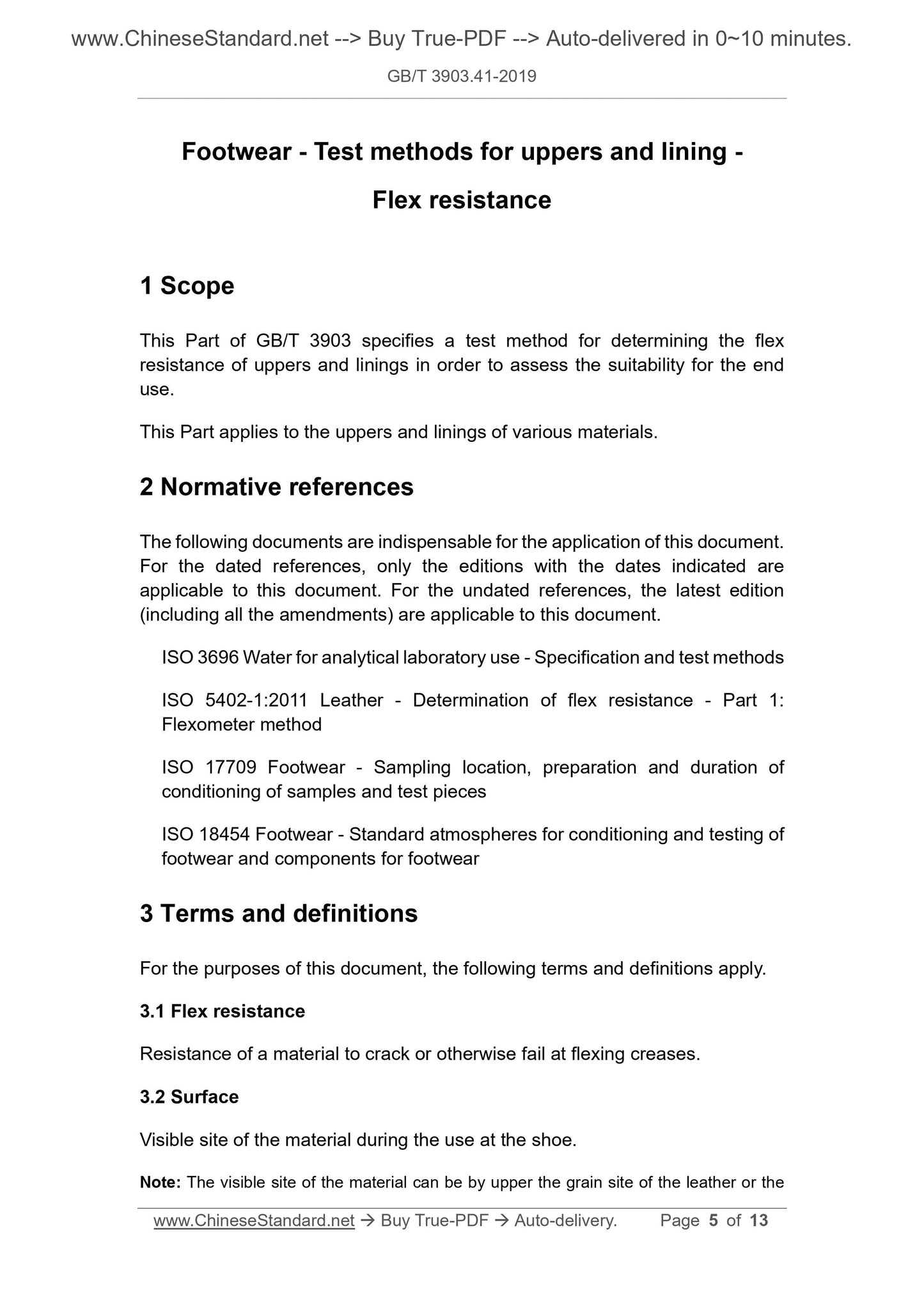1
/
of
4
www.ChineseStandard.us -- Field Test Asia Pte. Ltd.
GB/T 3903.41-2019 English PDF (GB/T3903.41-2019)
GB/T 3903.41-2019 English PDF (GB/T3903.41-2019)
Regular price
$125.00
Regular price
Sale price
$125.00
Unit price
/
per
Shipping calculated at checkout.
Couldn't load pickup availability
GB/T 3903.41-2019: Footwear - Test methods for uppers and lining - Flex resistance
Delivery: 9 seconds. Download (and Email) true-PDF + Invoice.Get Quotation: Click GB/T 3903.41-2019 (Self-service in 1-minute)
Newer / historical versions: GB/T 3903.41-2019
Preview True-PDF
Scope
This part of GB/T 3903 specifies the test method for determining the folding resistance of the upper and the lining. The purpose is to evaluate the suitability of the end use.Suitability.
This section applies to the upper faces and linings of various materials.
Basic Data
| Standard ID | GB/T 3903.41-2019 (GB/T3903.41-2019) |
| Description (Translated English) | Footwear - Test methods for uppers and lining - Flex resistance |
| Sector / Industry | National Standard (Recommended) |
| Classification of Chinese Standard | Y78 |
| Classification of International Standard | 61.060 |
| Word Count Estimation | 10,196 |
| Date of Issue | 2019-08-30 |
| Date of Implementation | 2020-03-01 |
| Issuing agency(ies) | State Administration for Market Regulation, China National Standardization Administration |
Share







